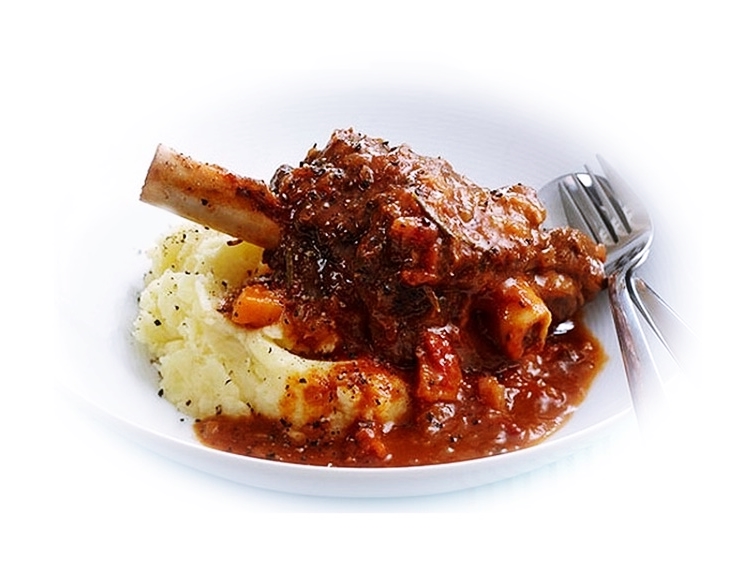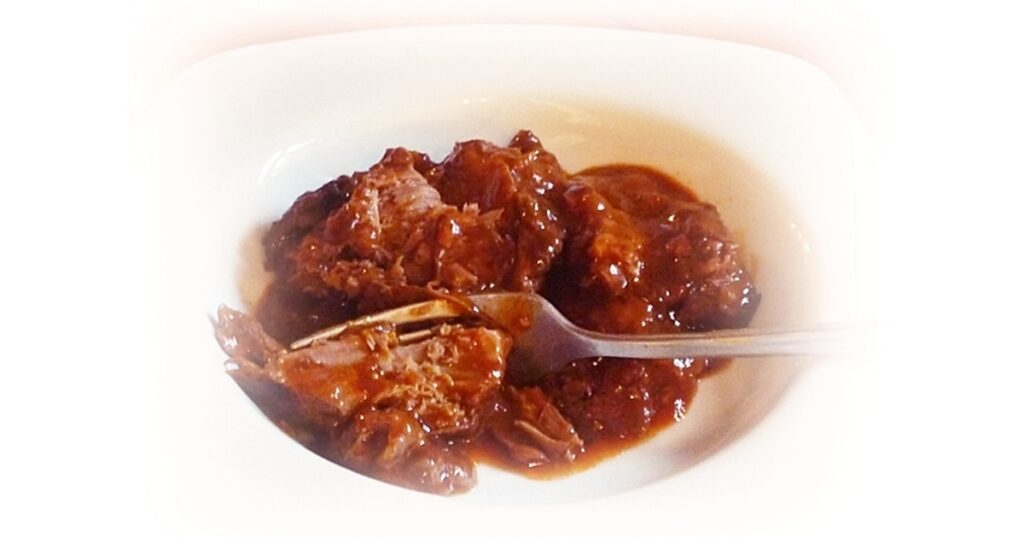
How to Stew or Braise Meat ~ Tenderly & Deliciously!
In this post ...
Whether you stew or braise meat you are in for a delicious treat. Today I am braising the knuckle end of a leg of lamb for our dinner. I can’t wait, its lovely aroma fills our little home, it will be delicious!
Here’s the recipe …
Wine Braised Leg of Lamb
This is a brilliant way to cook lamb shanks too, of course.
2-3 tablespoons olive oil
half a leg of lamb – knuckle end
salt
1 large onion, sliced
1 carrot – coarsely chopped
2 garlic cloves – finely chopped
½ tablespoon tomato paste
1 tablespoon flour
300ml red wine
300l beef stock
~ Heat the oil in a saucepan large enough to hold the meat on its side.
~ Season the meat with a sprinkling of salt and carefully brown on all sides in the pan. Set aside.
~ Add a drizzle more oil and cook the onions and carrots, stirring often, till softening and just starting to take colour.
~ Stir in the garlic and cook gently for a minute.
~ Stir in the tomato paste and cook gently another minute.
~ Stir in the flour and, yes, cook gently another minute.
~ Add the wine and stock and bring to the boil stirring and scraping to dissolve any meat juices on the bottom of the pan.
~ Return the meat to the pan and if necessary add a little stock or water to bring the liquid to just about half way up the meat.
~ Turn the heat to low.
~ Cover with foil and then the lid, so as to seal the pan.~ Simmer for 2-3 hours till very, very, very tender and wonderful.
~ If the sauce is a little runny for your taste remove the lamb and set aside whilst you boil the gravy down a little. If it is far too runny – try adding a little beurre manie! See below.
Now, for all the specific instructions above, this is a basic or core recipe. Once you know how to do it you can stew or braise pretty well anything!!!
Here are some guidelines and suggestions …
Stew or Braise?
In a stew the meat is usually diced or in pieces and is completely covered in liquid when cooking. Braising is the method generally used for a single large piece of meat and the liquid normally only comes half way up the meat.
Which Meat to Stew or Braise?
Happily, the best meats for stewing and braising are the cheaper cuts! These are usually tougher or more hard-working meats such as shin of beef or lamb shanks – the gentle cooking makes them tender and luscious.
Browning the Meat – the Maillard Reaction
I wrote, a few months ago, a post on making delicious pan sauces where I gave a lot of details on Pan Searing, so please have a look. It is an important step in making a delicious stew.

The Stew or Braise Base
Once the meat is browned and set aside the vegetables are added. Onions are pretty well compulsory.
Different cultures use different combinations of aromatics to create different effects. In France the classic combination is onion, carrot and celery and it is called mirepoix. In Italy, Spain and other Latin countries they do a similar thing, but they call it sofrito and often add garlic, fennel, parsley plus finely shredded prosciutto.
All you need do is choose what you fancy, to compliment your main ingredient and then add them to the remaining fat in the pan after setting aside the meat.
Liquid for Stewing and Braising
Well, at a pinch water will do but we can do so much better than that! Use an appropriate stock, homemade or bought in; beef stock will work for lamb too, chicken stock is good for pork and veg stock is fine with chicken and pork. The addition of wine is a great flavour boost, it is normal to use red with beef and lamb, white with chicken and whatever you fancy with pork but there are exceptions e.g. Coq au Vin is made of chicken and red wine. Steak in ale is a great combination as is pork braised, or stewed, in dry cider. Again, it’s up to you.
Other Additions to your Stew or Braise
Use whatever you like, within reason, add bacon or chorizo to chicken stews, stir a little apple sauce into pork casserole, a spoonful of redcurrant jelly can do wonders for a lamb stew. Season to make you happy, I like lots of black pepper in most things. Black garlic is great with beef, stir a couple of chopped cloves or a spoonful of paste in for the last half hour or cooking. Tomato paste cooked in with the vegetables, as above, adds a subtle sweetness – go for it!
How to Thicken the Gravy
Some people suggest coating the meat in seasoned flour before browning as it will help thicken the sauce. I used to do this but have decided against it in more recent years, the reason being that the flour is easily burnt and hinders the browning of the meat. Instead I add flour to the sautéed vegetables before adding the liquid. If, once cooked, the gravy is too runny to just cook down a little then I would recommend (as above in the lamb recipe) the addition of beurre manie. Don’t worry it is so easy!

Beurre Manie
“Beurre Manie” means kneaded butter and is simply equal quantities of flour and soft butter mashed together to form a smooth paste. You probably only need a spoonful or so of each but if you make too much it is a useful thing to keep in the fridge.
Remove and set aside (we cooks do a lot of setting aside!) the meat. Have your gravy at a simmer and whisk in a little of the beurre manie, bring to a boil, whisk and simmer till the sauce thickens. If you are not happy with the result repeat with a little more beurre manie till you are. If you make it too thick stir in a little more stock or water.
Turn off the heat and return the meat to the pan. If serving soon, cover the pan to retain the heat. If storing for later, transfer the stew to a fresh cold dish and cool completely before covering and storing in the fridge.
Ooh, I’ve just had an idea. Why not use an appropriately flavoured butter (e.g. garlic and parsley for chicken stew) to make your beurre manie!
Helpful Tips when making a Stew or Braise
~ ALWAYS get meat out of the fridge a while before cooking and allow it to come to room temperature (21°C / 70°F – ish). It will then cook more evenly and also a little faster.
~ Dry meat with a kitchen roll/paper towel before cooking, this will allow it to brown without sticking.
~ Get the pan good and hot before adding oil and then get the oil good and hot before adding the meat.
~ When browning meat ALWAYS leave plenty of room between pieces, otherwise what they will actually do is steam rather than fry and they’ll end up pallid and soggy.
Leftover Stew
Here are my ideas for left over stew.

Suzy Bowler
Having been a somewhat itinerant chef for over 30 years I was amazed, on my return to the UK, at the blatant food waste that now seems to be rife in the country; amazed and irritated. So much so that I decided to start a blog about spontaneous cooking from leftovers to show people that there are great alternatives to throwing food away.

